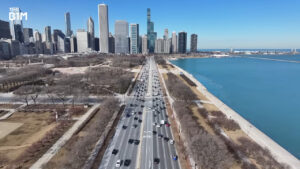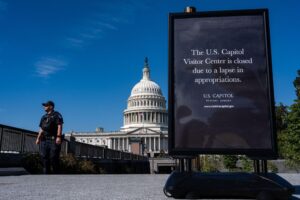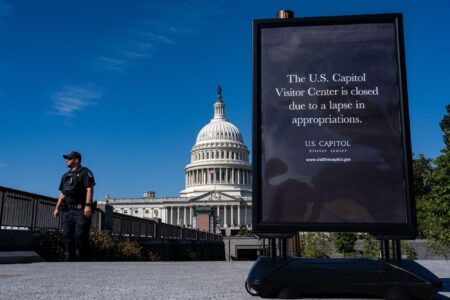Examining the Legality of TrumpŌĆÖs Attempted Takeover in Washington D.C. Amid Declining Crime Rates
In recent times, former President Donald TrumpŌĆÖs controversial efforts to assert control over Washington D.C.ŌĆÖs governance have reignited debates about the legal limits of federal intervention in the nationŌĆÖs capital. While his actions have stirred significant political and judicial controversy, emerging crime statistics reveal a surprising trend: a consistent reduction in violent crime across the city. This contrast invites a deeper exploration of the legal ramifications of TrumpŌĆÖs involvement and the actual effects on public safety. This article offers a fresh perspective on the constitutional questions raised by TrumpŌĆÖs takeover attempt and analyzes crime data that challenge common assumptions, shedding light on a pivotal moment in contemporary American politics.
Legal Questions Surrounding TrumpŌĆÖs Intervention in D.C.
Donald TrumpŌĆÖs push to influence Washington D.C.ŌĆÖs law enforcement and administrative control has ignited a fierce legal debate centered on constitutional authority and the districtŌĆÖs right to self-governance. Opponents argue that such federal interference infringes upon D.C.ŌĆÖs home rule, a principle that grants the city a degree of autonomy under federal law. They warn that bypassing Congressional consent for a federal takeover could violate established statutes and disrupt the delicate balance of power between local and federal governments.
Conversely, proponents claim that extraordinary circumstancesŌĆösuch as concerns over national security and public orderŌĆöjustify federal involvement. The core legal dilemma revolves around whether the executive branch can unilaterally impose control over the districtŌĆÖs police and administrative functions without legislative approval, raising fundamental questions about separation of powers and municipal sovereignty.
This legal controversy unfolds alongside data indicating a significant drop in violent crime rates in Washington D.C. over recent years. According to the Department of Justice, several neighborhoods have experienced steady improvements in safety metrics, prompting debate about the necessity and consequences of any federal intervention. Key issues fueling this debate include:
- Limits of federal jurisdiction in local D.C. affairs
- Effects on community-based policing initiatives developed by local authorities
- Potential disruptions to law enforcement continuity amid positive crime trends
| Crime Category | 2021 Figures | 2023 Figures | Percentage Change |
|---|---|---|---|
| Homicides | 165 | 112 | -32% |
| Robberies | 1,230 | 950 | -23% |
| Aggravated Assaults | 2,100 | 1,760 | -16% |
Crime Patterns in D.C. Amid Political Uncertainty
Despite the political turbulence linked to TrumpŌĆÖs contested efforts to control Washington D.C., crime data reveal a contrasting narrative of improving public safety. The Metropolitan Police DepartmentŌĆÖs latest reports show a consistent decline in both violent and property crimes over the past year, challenging predictions of disorder during times of political strife. Experts attribute this positive trend to proactive law enforcement tactics and strengthened community partnerships that have helped maintain order despite heightened tensions.
Several strategic initiatives have been instrumental in this progress, including:
- Expanded neighborhood policing programs fostering closer community ties
- Focused anti-violence campaigns targeting gun-related offenses
- Deployment of advanced surveillance technologies and rapid response teams
| Crime Type | 2022 Incidents | 2023 Incidents | Percent Change |
|---|---|---|---|
| Robbery | 1,200 | 1,050 | -12.5% |
| Assault | 950 | 840 | -11.6% |
| Burglary | 700 | 600 | -14.3% |
| Theft | 2,300 | 2,100 | -8.7% |
As legal debates about TrumpŌĆÖs influence on D.C.ŌĆÖs leadership persist, these crime statistics highlight a resilient city where political discord has not translated into increased criminal activity. This underscores the effectiveness of adaptive policing and community engagement in preserving public safety during uncertain times.
Expert Perspectives on Federal Influence and Local Autonomy
Scholars and political commentators remain divided over the consequences of federal intervention in Washington D.C.ŌĆÖs local governance. Advocates for federal involvement argue that such actions can enhance public safety and law enforcement efficiency, especially during crises. However, many legal experts caution that overriding the districtŌĆÖs home rule risks undermining democratic principles and setting a precedent that could weaken local self-governance.
Constitutional interpretations of the District Clause and CongressŌĆÖs authority over the capital add layers of complexity to this debate. Some criminologists observe a correlation between increased federal oversight and reductions in crime rates, though they emphasize that causality is difficult to establish due to multiple overlapping factors.
Key considerations highlighted by experts include:
- Allocation of resources: Federal support can enhance police funding and manpower, improving operational capacity.
- Policy alignment: Federal mandates may standardize law enforcement practices but risk conflicting with local priorities.
- Community trust: Imposed governance structures can disrupt relationships between residents and police agencies.
| Area of Impact | Positive Outcomes | Potential Drawbacks |
|---|---|---|
| Crime Reduction | Short-term declines in violent crime | Questions about long-term sustainability and data interpretation |
| Governance Authority | Enhanced enforcement capabilities | Reduced local decision-making power |
| Public Perception | Increased feelings of safety among some groups | Erosion of trust between communities and authorities |
Strategies for Harmonizing Security and Democratic Values
Balancing the imperative of public safety with the preservation of democratic freedoms demands a careful, principled approach. Policymakers should implement transparent oversight frameworks that ensure law enforcement accountability while upholding civil liberties. Mechanisms such as independent review boards and community advisory councils can serve as vital checks, evaluating the appropriateness and legality of security measures during politically sensitive periods. These structures help prevent alienation of the public and reinforce confidence in democratic governance.
- Community involvement: Foster ongoing dialogue between officials and residents to develop security policies that address local needs.
- Evidence-based decision-making: Leverage crime data and risk analyses to justify interventions without overstepping boundaries.
- Judicial oversight: Ensure courts review exceptional security actions to maintain legality and fairness.
| Policy Measure | Democratic Advantage | Security Benefit |
|---|---|---|
| Independent Oversight | Ensures accountability | Prevents abuse of power |
| Open Data Sharing | Promotes informed public discourse | Supports targeted law enforcement |
| Community Policing | Builds public trust | Reduces community tensions |
Moreover, it is crucial to balance rapid response with procedural fairness during emergencies. Security policies should avoid creating precedents that could gradually erode democratic norms. To maintain this balance, governments might consider instituting sunset clauses for extraordinary powers and promoting civic education to enhance public understanding of constitutional rights. Such measures not only uphold the rule of law but also empower citizens to participate actively in democracy while feeling protected from genuine threats.
Conclusion
As investigations proceed and legal discussions evolve, the ramifications of Donald TrumpŌĆÖs attempted takeover of Washington D.C. remain central to ongoing conversations about governance and public safety. While crime statistics during this period indicate a downward trend in violence, questions about the legality and broader consequences of such federal interventions continue to provoke debate among lawmakers, legal experts, and the public. Our coverage will persist in delivering balanced, in-depth analysis to illuminate these multifaceted issues.







